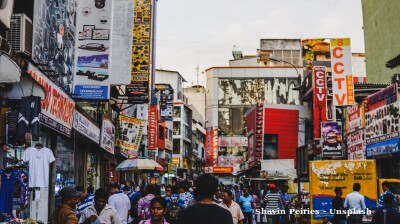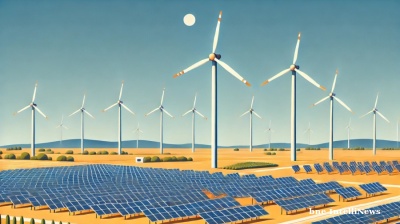Slovenia is heading towards general elections in spring 2022. This will pit the government led by Prime Minister Janez Jansa — who critics say is taking Slovenia down the same illiberal route as Hungary and Poland — against the opposition parties determined to unseat him.
The pressure on Jansa to resign stepped up in 2021, with the opposition parties accusing him of degrading Slovenia’s democracy, not respecting the rule of law and tightening his grip on the media. He has also clashed several times with EU officials. President Borut Pahor plans to call a general election for April 24 as the earliest possible date and to sign a decree on the election date in February.
Four opposition parties, the List of Marjan Sarec (LMS), Social Democrats (SD), Levica (the Left) and Alenka Bratusek’s Party (SAB), signed a cooperation agreement on September 28, agreeing to form a government without Jansa’s rightwing Slovenian Democratic Party (SDS) should they gain enough votes in the next general election.
Under the deal the opposition parties agreed to “normalise” Slovenia, to form a government without the ruling SDS and the parties supporting it, and that a prime minister-designate will be put forward by the participating party which has won the most votes. Levica described Jansa’s government as destructive and anti-democratic, and accused it of pursuing far-right policies.
Jansa came to power in March 2020 after the resignation of Marjan Sarec at the end of January 2020. The government consisted of the SDS, the Modern Centre Party (SMC), New Slovenia (NSi) and the Pensioners’ Party (DeSUS), but DeSUS left the coalition in December 2020 due to disagreements with Jansa.
Ahead of new elections in 2022, support for Slovenia’s minority government has been falling. The most recent public opinion poll conducted by Mediana Institute showed that only 16.3% of respondents would support the SDS, while 59.7% of them rate the work of the government negatively.
Under Jansa, Ljubljana has frequently been in conflict with EU institutions, which came under the spotlight during Slovenia's six-month EU Council presidency in the second half of 2021. Recently, Slovenia has been criticised by EU officials for the delay in appointing two European delegated prosecutors (EDPs) and for cutting funding for news agency STA. The two EDPs were finally appointed by the European Public Prosecutor's Office (EPPO) on November 24.
Jansa’s government cut off funding for STA at the end of 2020, after the prime minister accused it of unfair reporting. STA is supposed to receive funds for its public service activities. The European Commission has repeatedly expressed serious concerns about this issue.
The finances were restored in November 2021, when the new acting director of STA Igor Kadunc and the head of the Government Communication Office (UKOM) Uros Urbanija signed a deal on the provision of STA's public service, valid until the end of 2021.
During 2021, protests against anti-COVID-19 measures imposed by the government were frequent in Slovenia.
The government has been tightening measures and is trying to get more people vaccinated to prevent the spread of the pandemic after it faced a severe fourth wave of COVID-19 epidemic in October and November 2021 that peaked at over 4,000 daily cases on November 17.
Following the spring general election, Slovenia will hold presidential and local elections in the autumn.
Presidential elections are due in October 2022. The incumbent Pahor is ineligible to run as he has served two five-year terms.
Local elections have a fixed date on the third Sunday of November. The local elections rarely reflect political realities at the national level as many candidates in the country’s 212 municipalities are elected from local lists without a firm party affiliation, or from smaller parties that are not represented in parliament. In the last election, the People's Party (SLS) ended with the largest number of mayors despite being absent from national politics since 2014.
Macroeconomy
Growth is set to moderate in 2022 following strong GDP growth figures in 2021 from the low base in 2020.
The European Commission has downgraded Slovenia’s GDP growth forecast for 2022 by 0.9 pp to 4.2% and growth is expected to slow down further in 2023 to 3.5%, following projected growth of 6.4% in 2021.
For 2022 the IMF projection for Slovenia’s economic growth was lifted by 0.1 of a percentage point (pp) to 4.6%.
In the first nine months of 2021, Slovenia's GDP expanded by an annual 7.4% and domestic demand is expected to remain the main growth driver.
The central bank said that the growth is expected to be slightly slower in the final quarter of 2021, particularly in light of the potential expansion of containment measures to prevent the renewed spread of the pandemic. Furthermore, the risks associated with the poor epidemiological picture in Europe, the spread of the new coronavirus variant, bottlenecks in supply chains, and high energy prices and input commodity prices are all growing.
External environment: The country’s current account surplus is projected at 6.4% of GDP in 2021 and 6.3% of GDP in 2022 following a surplus of 7.4% of GDP in 2020, according to the IMF.
Slovenia posted a current account surplus of €1.56bn in the first nine months of 2021, which is down by 37.6% from the same period in the previous year, according to central bank data. In 2020, Slovenia posted a current account surplus of €3.3bn, which is up by 20.2% from 2019.
In the third quarter of 2021, net exports had a negative contribution to the GDP growth of 5%, on account of the stronger increase in import compared to exports. With a high level of investment, including in inventories, import growth was significantly above export growth.
According to Erste Group, Slovenia’s current account surplus is seen at 4.5% of GDP in 2022 from 4.8% of GDP in 2021.
Foreign direct investment (FDI) is expected at 2.4% of GDP both in 2021 and 2022, according to Erste.
Inflation and monetary policy: Inflation has been rising, which the central bank attributed to several one-off factors. It reached 4.9% in December, of which higher prices of petroleum products contributed 1.3 pp. The recent rise in energy prices is attributable to a low-base effect, and high prices of oil and natural gas on international markets, while prices of emissions allowances are also rising.
The expectation is that inflation will persist at higher levels over the coming months, until the situation eases in global supply chains and on the energy markets.
Slovenia’s harmonised index of consumer prices inflation is seen at 1.7% in 2021 after the country posted an average deflation of 0.3% in 2020, the European Commission said. Inflation is expected to further speed up to 2.1% in 2022 and to slow down to 1.7% in 2023.
In terms of average annual inflation, the IMF said that Slovenia’s consumer prices are seen rising by 1.4% on average in 2021 and to speed up to 1.8% in 2022, compared with a slim deflation of 0.1% in 2020.
Industrial production: The situation in industry remained favourable, although firms are reporting high capacity utilisation and shortages of intermediate goods, which is already curtailing growth in exports, according to the central bank. Firms are also seeing growth curtailed by higher commodity prices and energy prices, and a shortage of skilled labour. Quarterly growth in value-added in industry thus slowed to 0.5% in the third quarter of 2021. Other sectors saw current growth in activity either maintain the same level as in the second quarter, or pick up the pace.
Year on year, industrial production increased by 6.2% in October, after rising by 7.8% y/y in September.
In October 2021, the total value of stocks in industrial production was 1% higher than in September 2021. It was 9.6% higher than in October 2020 and 10.6% higher than in October 2019.
Real economy
Retail: The growth of retail sales is expected to slow down to 7.3% in 2022, from estimated 14.8% growth in 2021, according to Erste.
Slovenia’s retail sales soared by an annual 34.3% in October, accelerating significantly from a 17.1% y/y growth in the previous month, according to the statistics office.
Retail sales also grew compared to pre-pandemic October 2019, by 20.1%. The annual growth was primarily a consequence of the increase in retail trade with automotive fuel (by 97.2%), but growth was also significant in retail trade of non-food products (by 13.1%) and food products (by 7.6%).
Banks: The net profit of Slovenian commercial banks plunged by an annual 38.3% to €324.4mn in the first nine months of 2021, the Bank of Slovenia said. This was a result of lower non-interest income.
The central bank said that the banking system’s balance sheet declined by €316.4mn in September and amounted to €47.5bn at the end of the month, up by an annual 9.1%.
Household lending continued in September, as in previous months, to be driven primarily by housing loans. Corporate lending remains weak, although lending to non-financial corporations in September 2021 was slightly larger than in the same month in 2020. The non-performing exposure (NPE) ratio in September remained unchanged from the previous month, but the decline in the share of the credit portfolio in the stage of increased credit risk has slowed in recent months. Pre-tax profit was relatively high, but was driven primarily by the net release of impairments and provisions. The ratio of net impairments and provisions to gross income has stayed at its long-term average for some time now. The future sustainability of the banks’ profit generated in this way remains questionable. The banking system is maintaining a good capital position and liquidity position. The total capital ratio is slightly below the euro area average, while the CET1 ratio is above the euro area average. Liquidity indicators also remain high, despite a slight decline in September.
Energy & power: Slovenia is counting on nuclear energy in its energy transition since renewable sources will not be enough to cover the production shortfall once coal is phased out given that the country has missed many opportunities already, Infrastructure Minister Jernej Vrtovec said in November.
In April 2021, Slovenia’s government adopted a resolution on the country's long-term climate strategy aimed at net zero emissions by 2050 in line with EU targets on climate neutrality.
Under the long-term strategy, Slovenia plans to cut greenhouse gas emissions by 80-90% by 2050 compared to 2005 and boost the implementation of the policies of adjusting to climate change and providing for climate safety.
According to the plans, Slovenia expects to spend between €21bn and €27bn to achieve net-zero greenhouse gas emissions by 2050.
Slovenia has joined the Alliance for Strengthening Coal Exit initiative as part of its efforts to strengthen the global energy transition, the infrastructure ministry announced in November.
Slovenia also supported the Declaration on Public Support for a Clean Energy Transition, whose purpose is to make international commitment to switch to clean energy and away from fossil fuels, and which is essential to limit the rise in global temperature to 1.5°C.
Average electricity and gas prices in Slovenia went up in the third quarter of 2021 over the previous three months for both household and business consumers, the statistics office said.
In the third quarter, the average electricity price for household consumers grew by 5% from the previous quarter and was 0.173 €/kWh, while the average electricity price without VAT for non-household consumers rose by 8% q/q to 0.096 €/kWh.
The average natural gas price for household consumers increased by 4% compared to the second quarter and amounted to 0.057 €/kWh. During the same period, the average natural gas price without value added tax for non-household consumers jumped by 16% to 0.033 €/kWh.
Slovenian energy group GEN-I, which specialises in electricity trading, announced in December it plans to invest over €1bn into renewables, energy efficiency and storage and digital platforms by 2030, thus creating over 700 new green jobs
The construction of a special storage facility for low- and intermediate-level waste at Slovenia's sole nuclear plant Krsko is expected to start at the beginning of 2022.
Construction: The construction sector grew by 2.5% y/y in the third quarter, while the overall economy expanded by 5% in the same quarter.
In November 2021, the construction confidence indicator was 1 pp lower than in October. Compared to November 2020, it was 25 pp higher and it was 33 pp higher than the long-term average.
The decrease in the confidence indicator was mainly due to the overall order books indicator, which decreased by 3 pp. The expected employment indicator did not affect the change in value this time, as it remained the same as in the previous month. The expected price indicator recorded a significant increase of 12 pp.
Slovenia’s construction cost index (CCI) for new residential buildings rose by an annual 7.3% in the second quarter of 2021, accelerating from a 5.6% y/y increase in the previous quarter.
Major Sectors: Economic activity in Slovenia, similarly to the euro area overall, is being curtailed by shortages of intermediate goods, while shortages of skilled labour are also increasingly prominent, the central bank said
The car industry is one of the major manufacturing sectors being hit by shortages of intermediate goods such as semiconductors, and by bottlenecks in shipping and metals in 2021. Car production and sales have fallen globally while prices for both new and used vehicles have risen in a number of countries.
Budget and debt
In the amended budget for 2022, the government plans revenues of €11.47bn, which is 4.2% more than in the adopted budget for 2022.
Expenditures are planned at a total of €13.94bn or 10.7% more than in the previous budget plan. The budget deficit planned for 2022 is set at 4.6% of the country’s GDP. For 2021, it plans a budget gap of 5.6% of GDP.
Along with investments in key areas, the 2022 budget offers an opportunity for the long-term development and prosperity of the country, according to the government.
Fitch forecasts a budget deficit of 7.4% of GDP in 2021, as positive revenue trends are largely offset by COVID-19 related support measures, which have totaled €2.8bn or 6% of GDP, since the start of the pandemic.
The budget deficit is expected to narrow to 5.6% of GDP in 2022 and 3.7% of GDP in 2023 driven by expenditure control as no revenue-raising measures are planned.
The public debt-to-GDP ratio is expected to drop gradually to 73.4% in 2025 from a high of 79.8% in 2020, compared with 65.6% in 2019.
The reduction of the debt will be driven by stronger nominal growth, falling interest costs and the use of cash buffers.
Slovenia's gross external debt position stood at €51.7bn at end-September, up from €47.8bn at end-2020, according to data from Slovenia’s central bank.
According to the latest Banka Slovenije data, the gross external debt of the general government as of end-September decreased slightly to €24.77bn, from €24.96bn at end-2020.
On the rating side, Fitch once again affirmed Slovenia's rating at ‘A’ with stable outlook in December 2021, reflecting its expectations of a sustained economic recovery.
Erste said that yields have been showing a dynamic pattern in 4Q21; after rising during November, they started to gradually stabilise in previous weeks. The 10-year yield has currently been maintaining levels around the 0.15% mark, while also showing some spread widening vs. Germany (currently around 50bp, i.e. +15bp compared to 3Q21). Looking ahead, given the anticipated moves in the benchmark yield curve, Erste sees yields heading up while keeping an overall steady spread vs. Bunds (expected in the 40-50bp range).
The central bank of Slovenia said that the situation on the financial markets remains good, amid continuing economic policy support. A slight increase in volatility is evident, which is attributable to uncertainty on the part of market participants in connection with the duration of the increased inflationary pressures, the rise in COVID-19 case numbers, and the expectation that global central banks will begin gradually scaling back their accommodative stance. Financing conditions remain highly favourable for the government sector and for private-sector issuers alike. The yield on 10-year Slovenian government bonds is currently around 0.20%, approximately 50 basis points above the German benchmark.
The government said that Slovenia needs to borrow €5.05bn in 2022 to finance the budget needs. Besides financing the budgetary costs, Slovenia needs to finance maturing debt of nearly €2.3bn.
“Issuing of government bonds and treasury bills will be the primary instruments for financing the needs of the state budget. Other borrowing instruments may also be used,” the government said.
Markets outlook
The Slovenian blue chip index (SBITOP) is expected to trade at 1,202.35 points by the end of 2021, according to Trading Economics global macro models and analysts expectations. Looking forward, the estimations suggest it would trade at 1,147.65 in 12 months time.
Until the beginning of December, the SBITOP increased 332 points or 36.87% since the beginning of 2021. The increase continued to the start of 2022.

Slovenia's SBITOP index over the last three years. Source: Ljubljana Stock Exchange.
Slovenia is rated ‘A3’ by Moody’s, ‘AA-‘ by S&P and ‘A’ by Fitch, all with stable outlook.
Features
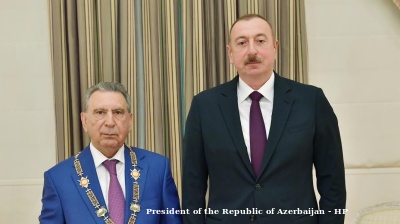
The fall of Azerbaijan's Grey Cardinal
Ramiz Mehdiyev served as Azerbaijan's Presidential Administration head for 24 consecutive years, making him arguably the most powerful unelected official in post-Soviet Azerbaijan until his dramatic fall from grace.

Ambition, access and acceleration – Uzbekistan’s Startup Garage opens free academy for entrepreneurship
Aim is to train 50,000 young founders by 2030.
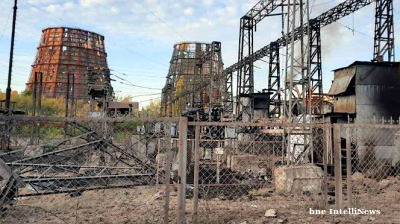
Ukraine’s growing energy crisis promises a cold and dark winter
Since the summer, Kyiv has changed tactics. Given the almost complete failure of Western oil sanctions to curb Russian oil exports, it has been targeting Russian oil refineries. The Kremlin has struck back, targeting Ukraine's power system.
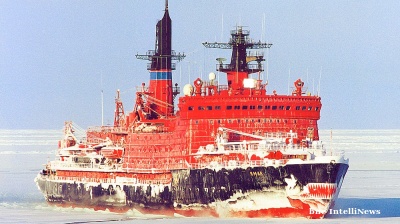
Russia, China sign off on Northern Route shipping deal to slash global freight times
Russia and China have signed a landmark agreement to develop and commercialise the Northern Sea Route (NSR), after Beijing tested the route last month, that could slash Europe-Asia cargo transit times and challenge the primacy of the Suez Canal.
